Contents
Kyoto isn’t just Japan’s cultural capital, it’s also a gourmet haven. While cities like Tokyo may get the spotlight for innovation and street food, Kyoto is where tradition takes center stage. Every bite in Kyoto tells a story about the seasons, the landscape, and centuries-old customs. From temple cuisine to street snacks, this city excels in delivering subtle flavors with a graceful touch.
Kyoto was the imperial capital for over a thousand years. As a result, it developed a refined, seasonal cuisine that reflects both aesthetics and taste. Unlike the bold flavors of Osaka or the high-speed energy of Tokyo dining, Kyoto’s food invites you to slow down. It encourages you to taste carefully and appreciate simplicity.
Kyoto’s culinary style is all about balance. colors, textures, and flavors. Every dish is crafted with an eye for detail and a mind for harmony. Whether it’s a humble bowl of rice or a meticulously prepared Kaiseki meal, each component serves a purpose. That’s why even locals never get tired of exploring Kyoto’s food scene it evolves with every season and festival.
Start with Nishiki Market, often called “Kyoto’s Kitchen.” This lively arcade is filled with vendors. They sell everything from tsukemono (pickles) to sesame tofu. You can also find fresh yuba (tofu skin) and wagashi (traditional sweets). It’s the best place for food sampling and people-watching.
Gion is another must-visit, where you can combine food with culture. Many Kaiseki and Obanzai restaurants here are housed in traditional machiya townhouses. You might even spot a geisha walking past while you’re enjoying your meal.
Then there’s Pontocho, a narrow alley lined with intimate eateries along the Kamogawa River. In summer, many restaurants here offer kawadoko dining eating on platforms built over the river.
Avoid rushing. Kyoto food isn’t meant to be scarfed down it’s meant to be savored.
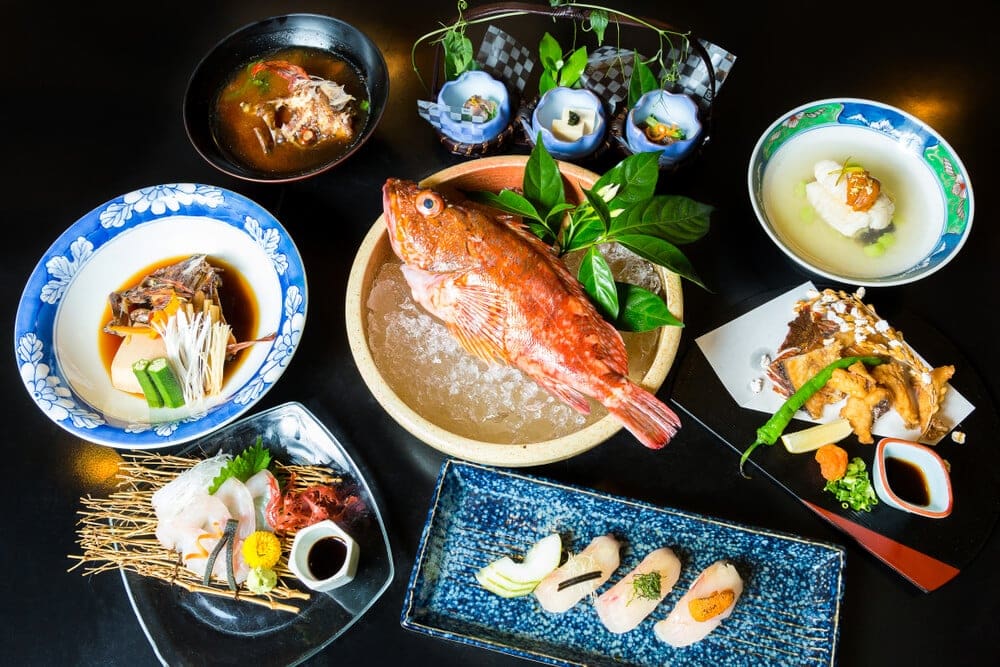
Kaiseki is the crown jewel of Kyoto cuisine a multi-course meal based on the season’s freshest ingredients. It’s not just a meal; it’s an art form. A typical Kaiseki experience includes small, intricate dishes. These include sashimi, seasonal vegetables, yuba (tofu skin), simmered delicacies, and a clear soup. They are all served in precise order to enhance flavor progression.
This tradition originated from the tea ceremony and has evolved into the pinnacle of Japanese haute cuisine. The presentation is often as breathtaking as the taste. Expect to find edible flowers, leaves, and ornate ceramics used to highlight each season.
Top Kaiseki restaurants in Kyoto:
Be sure to reserve in advance, and remember, Kaiseki is not just about eating—it’s a cultural experience.
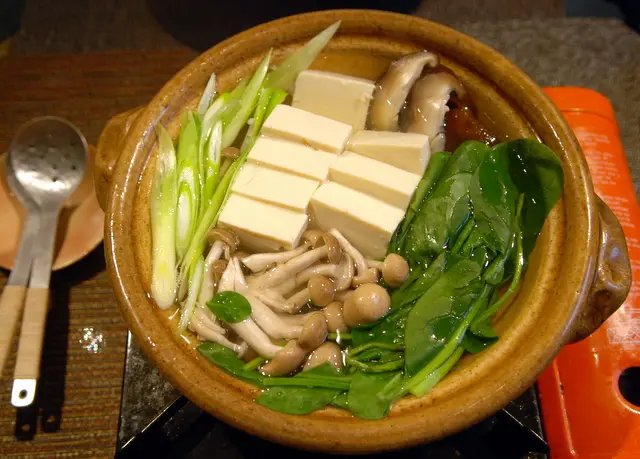
Yudofu, or boiled tofu, is one of Kyoto’s most humble yet spiritually significant dishes. Commonly served at temple restaurants near Nanzen-ji or Ryoan-ji, Yudofu reflects the Buddhist principle of shojin ryori—vegetarian cuisine for monks.
The tofu is gently simmered in kombu broth and eaten with dipping sauces like soy sauce, ponzu, or sesame. It’s incredibly delicate, soothing, and healthy. You’ll often find it served with a variety of seasonal vegetables, pickles, and rice. Eating Yudofu after a temple stroll offers a serene and fulfilling experience that resonates deeply with Kyoto’s slow lifestyle.
Top places to try:
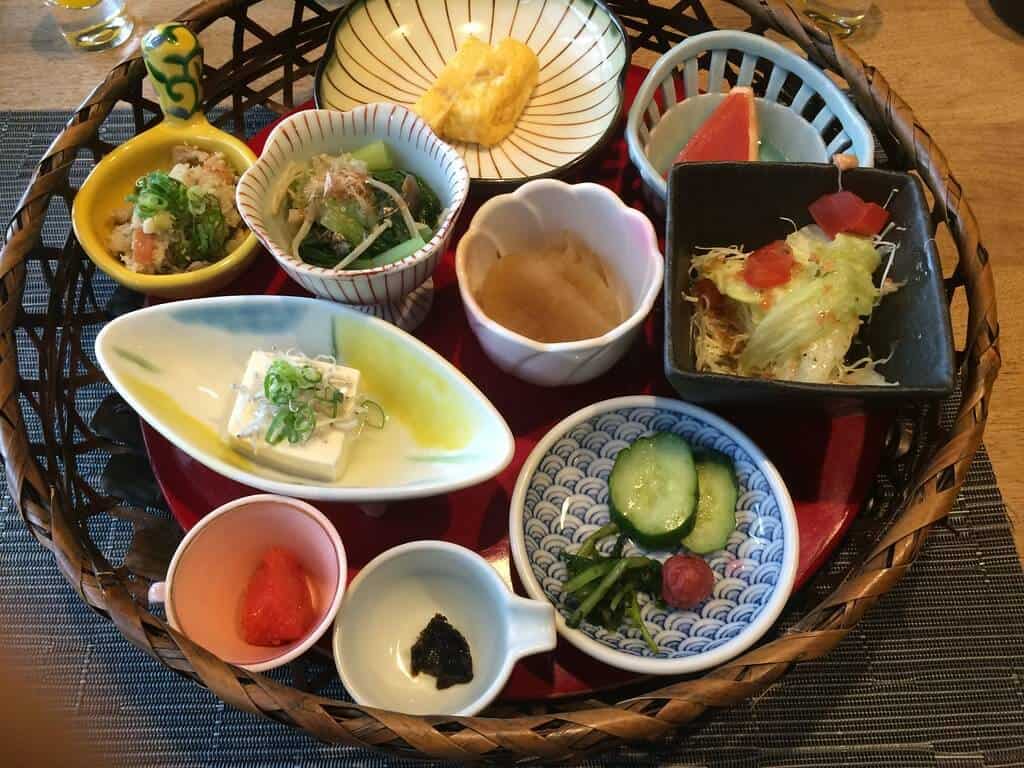
Obanzai is traditional Kyoto home cooking at its most delicious. It’s a style rather than a single dish, featuring small plates of seasonal vegetables, simmered roots, tofu, and pickles. Everything is usually handmade and locally sourced, staying true to the Kyoto philosophy of mottainai (avoiding waste and appreciating ingredients).
Typical Obanzai dishes include:
It’s light, flavorful, and ideal for vegetarians too. The cozy settings of most Obanzai restaurants add to the comfort food feel. They make you feel like you’ve been invited into a local’s kitchen.
Best Obanzai restaurants:
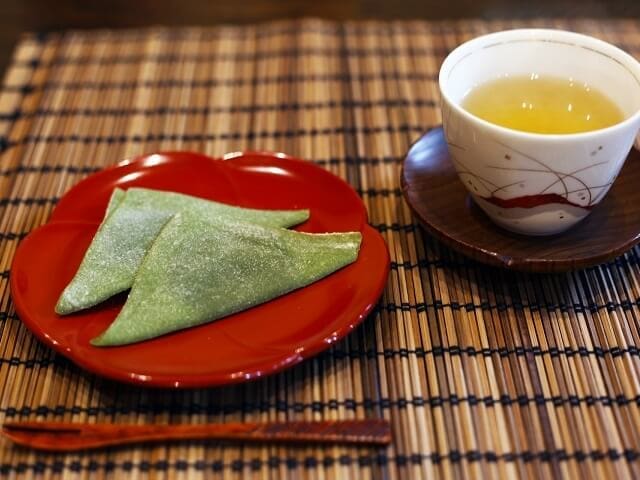
Kyoto’s love affair with pickles, or tsukemono, is real and deep-rooted. These aren’t your average cucumbers they’re complex, crunchy, and incredibly diverse. Kyo-tsukemono are typically served as palate cleansers or side dishes with rice and tea.
Popular Kyoto pickles include:
Most Kyoto meals include tsukemono, but for the best variety, visit:
Take some vacuum-packed pickles home, they make great souvenirs!

No trip to Kyoto is complete without tasting Yatsuhashi, the city’s most iconic sweet. There are two kinds:
Locals usually go for the fresh, raw kind—it’s soft, chewy, and not overly sweet. It’s especially popular as a souvenir, and you’ll find it at every train station, sweet shop, and market stall across the city.
Top Yatsuhashi brands:
They often offer free samples, so you can taste before you buy!
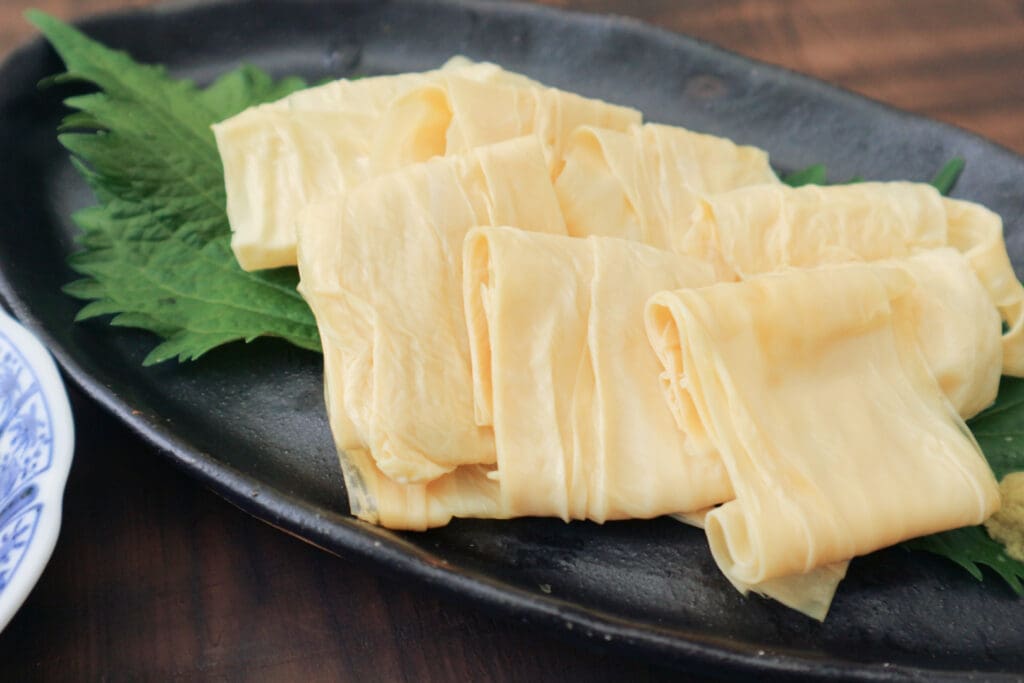
Yuba, also known as tofu skin, is made by skimming the thin film. This film forms on the surface of heated soy milk. This simple yet elegant ingredient has long been cherished in Kyoto, particularly within Buddhist temple cuisine. High in protein and gentle on the stomach, it embodies the city’s minimalist food philosophy.
You can enjoy yuba in many ways served fresh (nama yuba), dried, in soups, or even as sashimi-style slices. Its subtle flavor makes it ideal for absorbing sauces, and its soft, silky texture feels luxurious on the tongue.
Best places to try yuba:
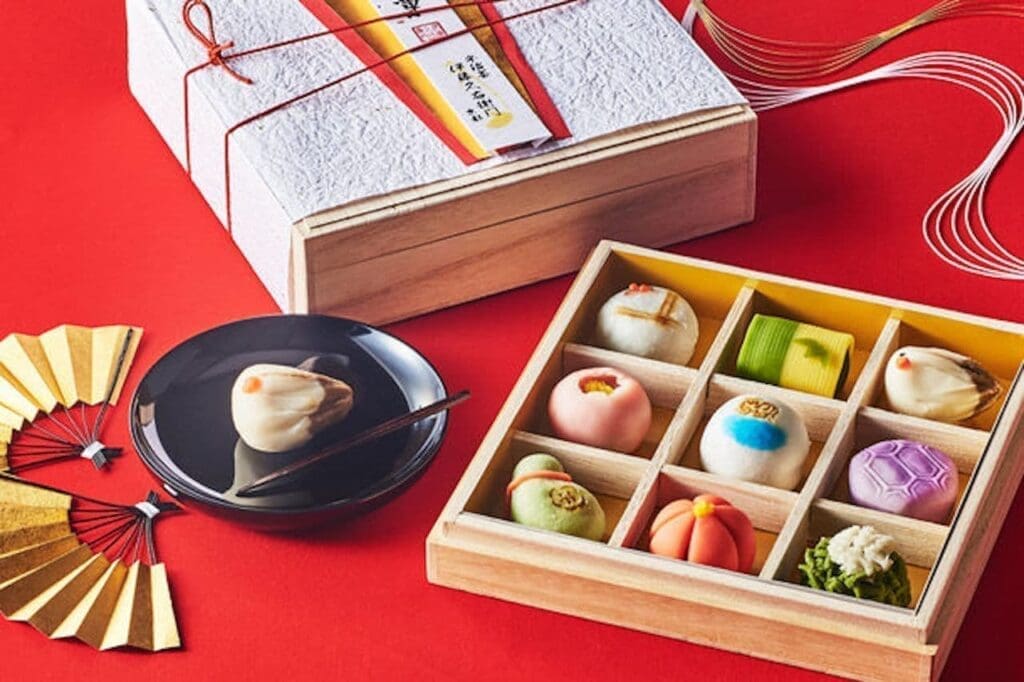
Kyo-gashi are traditional Kyoto sweets often served during tea ceremonies. These aren’t just desserts they’re miniature edible artworks made from rice flour, red bean paste, agar, and natural coloring.
Each sweet is inspired by seasonal elements like cherry blossoms in spring or maple leaves in autumn. They symbolize impermanence and appreciation for the present moment a key element in Kyoto’s cultural identity.
Popular types:
Where to try Kyo-gashi:
Pair them with matcha green tea for the ultimate Traditional Food in Kyoto
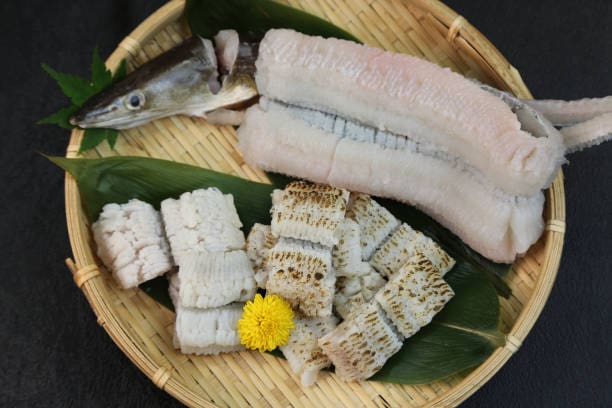
Hamo, a type of eel caught in the Seto Inland Sea, is particularly popular during Kyoto’s hot, humid summers. Hamo has numerous tiny bones. It is expertly prepared using a technique called honegiri. This technique slices the bones finely without breaking the skin. Only highly trained chefs can perform this.
You’ll often see hamo at Gion Matsuri, Kyoto’s most famous festival. It is served in various forms: grilled, deep-fried (tempura-style), or cold with plum sauce.
Top hamo restaurants:
It’s a dish that shows off Kyoto’s deep culinary expertise and seasonal awareness.
At first glance, Nishin Soba looks like a humble bowl of soba noodles topped with a piece of fish. But that fish nishin (herring is slowly simmered in a sweet soy-based sauce until tender, almost candy-like. The flavor seeps into the broth and transforms this into a comforting, umami-rich dish.
It’s a traditional Kyoto winter favorite and is often served in classic soba shops across the city.
Best spots to try:
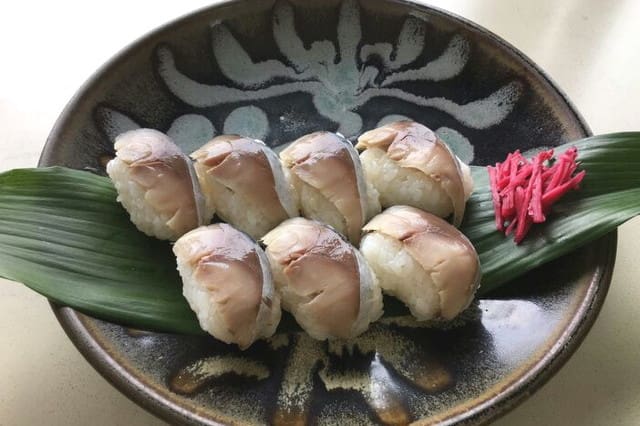
Unlike Tokyo’s nigiri sushi, Kyoto’s saba-zushi (mackerel sushi) is made with vinegared rice and cured fish, then pressed into a rectangular shape using wooden molds. It was traditionally prepared for special occasions and is a popular dish during festivals and temple visits.
This type of sushi was born out of necessity. Being a landlocked city, Kyotoites developed ways to preserve fish through curing. The result? A tangy, rich, and deeply satisfying sushi that doesn’t need soy sauce or wasabi.
Find saba-zushi at:
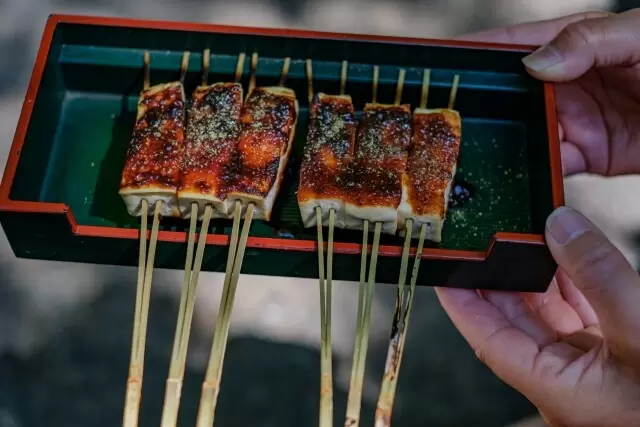
Dengaku dish is a traditional Food in Kyoto where firm tofu is skewered, grilled over charcoal, and glazed with sweet miso paste. It’s slightly smoky, a little sweet, and incredibly satisfying. Often served during festivals and in temple cuisine, it’s a popular vegetarian choice in Kyoto.
You’ll find dengaku served as part of bento boxes or individually in food markets. The miso glaze can vary. It can be sweet white miso (saikyo miso) or darker red miso. The type depends on the region or restaurant.
Try it at:
Kyoto cuisine is full of surprises, and chirimen sansho is one of them. It’s a condiment made of tiny whitebait (chirimen jako) stir-fried with sansho pepper, which has a numbing, citrusy kick. It’s typically served over rice or as a side with bento meals.
Locals love it for breakfast or lunch, and it also makes a great souvenir due to its long shelf life.
Pick up chirimen sansho from:
Matcha, or powdered green tea, is deeply rooted in Kyoto’s cultural identity. Uji (south of Kyoto) is one of Japan’s top matcha producers. The city has mastered incorporating matcha into everything from sweets to drinks and even noodles.
Popular matcha items include:
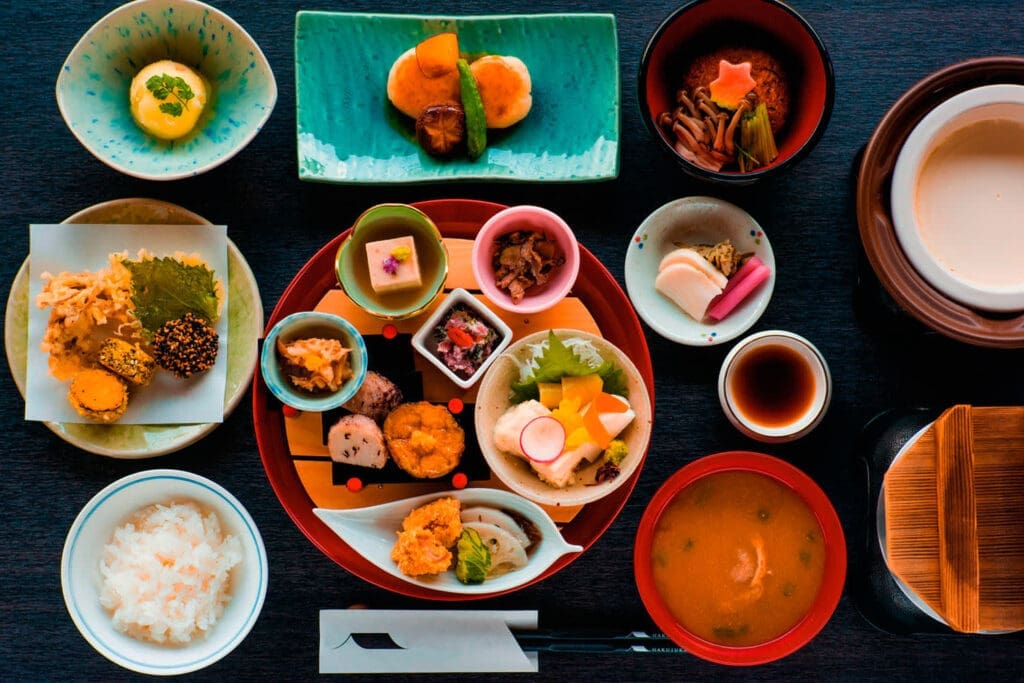
If you’re vegetarian or just want a spiritual food experience, try shojin ryori, the traditional cuisine of Buddhist monks. It uses no meat, fish, garlic, or onion, just tofu, seasonal vegetables, seaweed, and plenty of mindfulness.
Meals are artfully presented and deeply nourishing, and you’ll typically find them at temples.
Top temples offering shojin ryori:
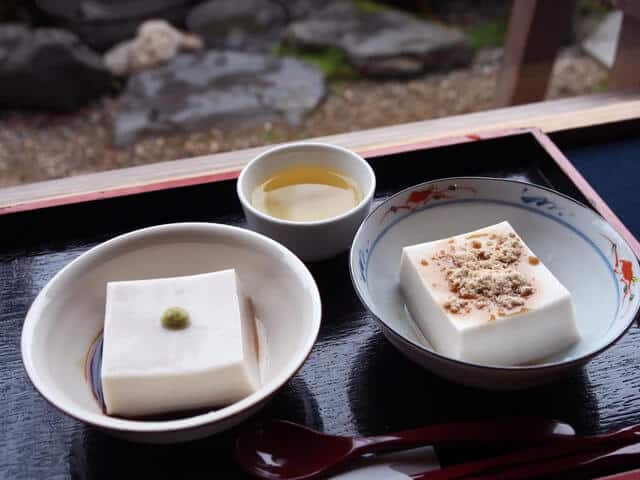
Unlike soy-based tofu, goma-dofu is made from sesame paste and kuzu starch, giving it a creamy, pudding-like texture. It’s often served chilled with a dab of wasabi and soy sauce or as part of a temple meal.
It’s subtle, silky, and incredibly satisfying perfect for a hot Kyoto summer day.
Find it at:
Kyoto’s food isn’t just delicious, it’s deeply connected to the city’s soul. Every dish you try here tells a story, not just of flavor, but of tradition, seasonality, and mindfulness. Unlike the flashy food scenes in bigger cities, Kyoto’s culinary world invites you to slow down. You are encouraged to observe. You can truly savor each bite.
Whether you’re indulging in a luxurious Kaiseki meal, you’re not just eating. Snacking on fresh Yatsuhashi involves more than just consuming food. Enjoying the simple comfort of Obanzai is an experience beyond eating. You’re connecting with centuries of culinary history. The best part? Kyoto offers something for every traveler, from spiritual Shojin Ryori to sweet treats like matcha parfaits.
So the next time you visit Kyoto, don’t just admire the temples. Stroll through the bamboo forest, eat like a local, and let the flavors lead you through the city’s ancient heart.
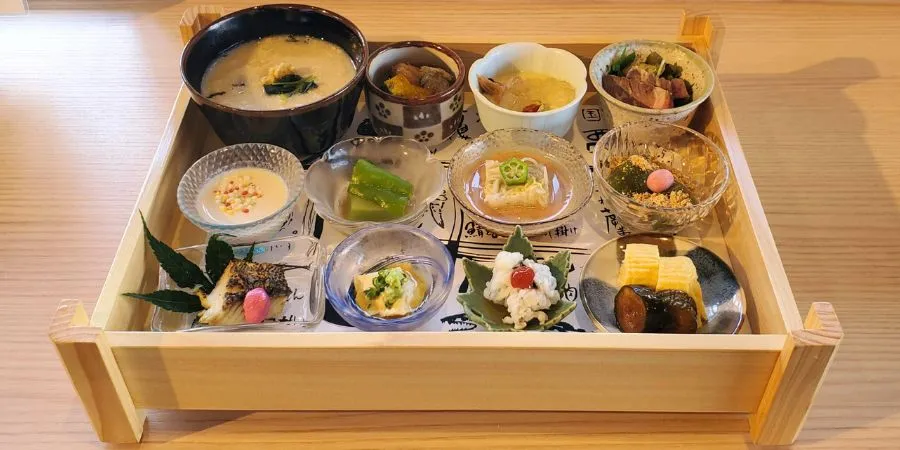
The most iconic food in Kyoto is Kaiseki Ryori. This is a seasonal, multi-course meal. It reflects the elegance and precision of Kyoto cuisine. Other famous dishes include Yudofu, Yatsuhashi, and Matcha desserts.
Great areas for food exploration include Nishiki Market, Gion, Pontocho, and near temples like Nanzen-ji or Tenryu-ji. For Kaiseki and Shojin Ryori, book a meal in advance at one of the city’s reputable restaurants or temples.
Yes! Kyoto is one of Japan’s most vegetarian-friendly cities. This is thanks to Shojin Ryori, the Buddhist tradition of meatless meals. There’s also an emphasis on vegetables and tofu.
Obanzai is Kyoto’s traditional home-style cooking, usually made with seasonal ingredients and served in small dishes. It’s comforting, healthy, and a great way to sample a variety of flavors in one meal.
Yatsuhashi (baked or raw), matcha sweets, chirimen sansho, and Kyoto-style pickles (tsukemono) make excellent edible souvenirs. Most are available at Kyoto Station, Nishiki Market, or specialty sweet shops.